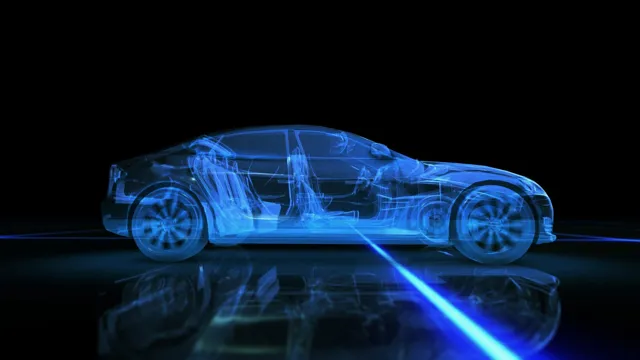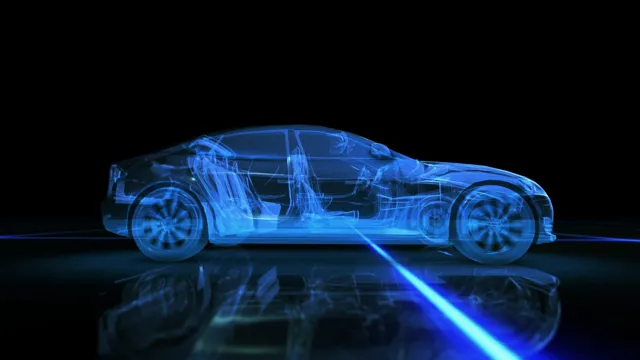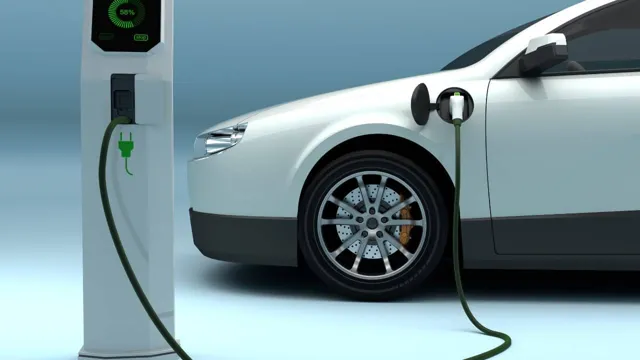10 Exciting Technological Advancements in Electric Cars You Can’t Afford to Miss
Electric cars have come a long way since their inception. With the advancements in technology, electric cars have become a more viable and practical option for everyday transportation. Manufacturers have made tremendous progress in improving the design and functionality of electric cars, greatly enhancing their appeal to consumers.
Technological advances in electric cars have been driven by a need for increased efficiency, reduced costs, and more sustainable energy sources. One of the most significant advancements in electric cars is the batteries used to power them. Lithium-ion batteries are now the standard in electric cars, delivering greater range and reliability.
They are also lighter and smaller, making them more practical for use in smaller vehicles. Advances in battery technology continue to drive the electric car industry forward, offering the potential for even greater functionality and efficiency in the years to come. Another critical development in the electric car industry is the improvement of charging infrastructure.
It is now possible to charge an electric car at home, in public charging stations, or dedicated charging ports. Charging times have also been significantly reduced, with new technology allowing for rapid charging in just a few minutes. This development greatly increases the practicality of electric cars for everyday use.
Automotive companies are also taking strides to develop self-driving electric cars, an innovation that would revolutionize the transportation industry. Also, the use of renewable energy sources like solar power in electric cars is another significant development making them more environmentally friendly. As technology continues to advance, electric cars will only become more efficient, practical, and mainstream.
They bring us closer to a sustainable and environmentally friendly future, without sacrificing convenience and comfort. The future looks bright for electric cars as we continue to strive for cleaner, more efficient transportation.
Battery technology
Technological advancements in electric cars have continued to amaze car enthusiasts and industry experts alike. Battery technology has been one of the key areas of focus, with manufacturers constantly pushing the limits of what is possible. Lithium-ion batteries have become the go-to technology for electric cars, but research has shown that there is still a lot of room for improvement.
For example, solid-state batteries have gained popularity due to their increased energy density and safety. Moreover, some carmakers are working on developing batteries that can be charged to 80% capacity in just a matter of minutes, making it easier to use electric cars for road trips. As battery technology continues to evolve, it’s clear that we are on the cusp of making electric cars a more feasible and practical option for everyday drivers.
Li-ion vs Solid-State Batteries
Battery technology has come a long way over the years, but two types of batteries that have been generating a lot of buzz lately are Li-ion and solid-state batteries. Li-ion batteries have been the mainstay for consumer electronics and electric vehicles for several years now. Their high energy density and long cycle life make them ideal for products that require a rechargeable battery.
However, they do have their limitations, like their relatively slow charging time and the potential for thermal runaway. On the other hand, solid-state batteries are attracting attention for being lighter and safer than Li-ion batteries. They use solid electrolytes instead of a liquid electrolyte, which means they have a lower risk of catching fire.
Plus, they can store more energy per unit of weight than Li-ion batteries, making them more efficient. However, they are still in the research and development phase, and it may be a few years before they become commercially available. As battery technology continues to advance, it will be interesting to see which type of battery emerges as the leading choice for consumer electronics and electric vehicles.

Battery charging speeds and infrastructure
Battery technology has a significant effect on the charging speed of electric vehicles. Lithium-ion batteries are currently the most popular and widely used battery technology for EVs due to their high energy density and ability to be recharged multiple times. However, the energy density of lithium-ion batteries is a limiting factor for the battery’s charging rate, as high-speed charging can generate heat and damage the battery’s lifespan.
Thus, new battery technologies are being developed to increase charging speeds, such as solid-state batteries and lithium-ion phosphate batteries. Moreover, the infrastructure for charging EVs plays a vital role in charging speeds, particularly in public spaces and long-distance travel. Charging stations with powerful charging stations can charge an electric vehicle in less than an hour, whereas a standard 120-volt household outlet would take over 12 hours to charge a battery fully.
Thus, the development of fast-charging infrastructure is critical for the adoption of electric vehicles. Public charging stations with high-speed charging options can help alleviate range anxiety, which is often a significant concern for potential electric vehicle owners. In conclusion, battery technology plays a critical role in charging speeds for electric vehicles.
Advancements in battery tech is always being developed to cater to the rising needs of the market. The infrastructure for charging EVs also requires attention, as fast-charging solutions available in public spaces is a necessity for EVs to proliferate in the market.
Battery range and efficiency improvements
Battery technology has been the key to improving electric vehicle battery range and efficiency. With advancements in battery chemistry and manufacturing processes, electric vehicles can travel farther and operate more efficiently than ever before. Lithium-ion batteries are the most commonly used type of battery in electric vehicles, and they have seen significant improvements in recent years.
Manufacturers have been able to increase the energy density of lithium-ion batteries while reducing their weight and size, resulting in electric vehicles with longer ranges and quicker charge times. Newer battery technologies such as solid-state batteries are also on the horizon, promising even greater improvements in battery range and efficiency. As electric vehicle technology continues to evolve, battery technology will continue to play a crucial role in improving the driving experience.
Autonomous driving features
Technological advancements in electric cars have lead to the emergence of autonomous driving features that have revolutionized the way we drive our vehicles. This revolutionary technology is built on a foundation of sensors, cameras, and powerful artificial intelligence algorithms that enable self-driving cars to detect their surroundings and drive themselves with little to no human intervention. Features such as adaptive cruise control, lane departure warning, and automatic emergency braking have been incorporated into modern electric cars, making driving safer and easier than ever before.
These advances in technology have not only increased the safety of driving, but they have also reduced the carbon footprint of transportation, making the adoption of electric vehicles a worthwhile pursuit. The future looks bright for the continued development of autonomous driving features, which will only become more advanced and efficient as technology continues to evolve. With the continued growth of these advanced features, we may soon be able to enjoy the convenience of self-driving cars without the need for human intervention.
Advanced driver-assistance systems (ADAS)
Autonomous driving features are a subset of advanced driver-assistance systems (ADAS) that enable a vehicle to operate independently without human input. These features use technologies such as cameras, sensors, and GPS to detect and navigate their surroundings, making driving safer and more efficient. Some examples of autonomous driving features include lane-keeping assistance, automatic emergency braking, and adaptive cruise control, allowing the car to maintain a safe distance from vehicles in front of it and adjust its speed accordingly.
Additionally, some advanced systems can even recognize pedestrians, stop signs, and traffic lights. This technology is rapidly advancing, and it’s expected that fully autonomous vehicles will be on the roads within the next few years. However, the safety and reliability of autonomous driving features are still being tested, and it’s likely that regulatory bodies will need to establish clear guidelines to ensure their safe use.
Despite this, the potential benefits of this technology are enormous, including improved road safety, reduced traffic congestion, and increased accessibility for those who cannot drive.
Fully autonomous driving capabilities
Autonomous driving technologies have been a hot topic in the automotive industry for some time, and companies are now racing to develop fully autonomous vehicles. These vehicles have the ability to navigate without human intervention, and they are equipped with advanced sensors and software to detect and respond to their surroundings. One of the main features of fully autonomous vehicles is their ability to take control of the driving process from start to finish, allowing passengers to sit back and relax while the car does all the work.
This advanced technology offers a range of benefits, from reducing accidents on the road to making it easier for people with disabilities to get around. As the technology continues to improve, we can expect to see more fully autonomous vehicles on the road in the near future.
Electric motors and powertrain
With technological advancements in electric cars, the electric motor and powertrain have become major focuses in the automotive industry. Traditional combustion engines have been replaced with electric motors, providing instant torque and smooth acceleration. Powertrain systems have also evolved, allowing for efficient energy distribution and regenerative braking.
These advancements have not only generated a cleaner and greener form of transportation but also a more reliable and sustainable one. With the development of more efficient batteries and charging infrastructure, electric cars are becoming more viable options for daily commuting and long-distance travel. The push towards electric power is driving innovation and creating a revolution in the automotive industry, aiming to create a more sustainable future.
As we continue to develop and test new technologies, the potential for electric cars is endless, representing a significant shift for the future of transportation.
Improvements in motor efficiency
Improvements in motor efficiency is one of the most significant advancements in electric powertrains. The latest generation of electric motors is designed to deliver higher efficiency with lower energy consumption. This is achieved through better materials, improved manufacturing processes, and optimized system designs.
The development of rare-earth magnets, for example, has dramatically improved the performance of electric motors by increasing torque density while reducing energy loss. Similarly, advancements in motor control technology have enabled more precise control of the motor, resulting in better energy efficiency and more responsive performance. To put it simply, these electric motors are designed to provide more power with less energy, resulting in electric vehicles that can go further and faster on a single charge.
As electric vehicles become increasingly popular, the development of more efficient motors will be crucial to improving their performance and reducing their impact on the environment.
Regenerative braking technology
Regenerative braking technology is an ingenious solution to one of the challenges faced by electric cars – how to make braking more efficient and reduce energy loss. This technology works by using the electric motor as a generator to convert kinetic energy into electricity when the driver applies the brakes. The electricity generated is then stored in the battery and can be used later to power the vehicle.
This means that the energy that would have been lost while braking in traditional cars is converted into electric power and can be effectively reused. This innovative technology is particularly useful in electric vehicles because it not only reduces energy waste, but it also saves money and extends the battery life. With regenerative braking, electric vehicles can maximize their range and drive for a longer distance.
Regenerative braking is not only efficient, but it is also eco-friendly, as it reduces the carbon footprint of vehicles. This technology is a significant step forward in the electric vehicle industry and paves the way for more sustainable transportation. With the growing demand for greener and more sustainable transportation, regenerative braking technology is poised to transform the way we drive and commute.
User interfaces and software
Electric cars have come a long way in the past few years, with technological advancements revolutionizing the way we drive and interact with our vehicles. One area of particular importance is user interfaces and software. As electric cars become more complex and sophisticated, so do the systems required to manage them.
Modern electric vehicles are equipped with advanced touchscreen displays, which allow drivers to control everything from the air conditioning and entertainment system to the vehicle’s battery and charging status. This technology is continually advancing, with many manufacturers experimenting with augmented reality displays and intuitive voice-command systems. As we move towards a future of self-driving cars and connected vehicles, the importance of user interfaces and software will only continue to grow.
With the right systems in place, electric cars have the potential to revolutionize transportation as we know it, offering greater efficiency, safety, and comfort than ever before.
Improved infotainment systems
Improved infotainment systems are becoming a staple in modern vehicles, with a focus on user interfaces and software. The days of clunky and confusing infotainment systems are in the past, as manufacturers have looked to streamline the experience for drivers and passengers alike. One of the key advancements has been the use of touchscreens and voice commands, allowing for easier navigation and control.
Additionally, many manufacturers are partnering with tech companies to provide seamless integration with popular apps and services, such as Apple CarPlay and Android Auto. These improvements have made infotainment systems more intuitive and user-friendly, enhancing the overall driving experience. As the technology continues to evolve, we can expect even more advancements in user interfaces and software, making way for a more seamless connection between the car and driver.
Vehicle-to-grid (V2G) technology
Vehicle-to-grid (V2G) technology is rapidly advancing as more and more electric vehicles (EVs) hit the roads. With V2G technology, EVs can discharge some or all of their stored energy back into the grid when they’re not being used. User interfaces and software are crucial components of V2G systems as they allow for easy monitoring and management of the energy flow between the vehicles and the grid.
These interfaces can display important information such as vehicle battery charge levels, and grid requirements, and enable EV owners to select their preferred charging and discharging times. One key benefit of incorporating V2G technology is that it can help balance the power grid, reducing the chances of blackouts and lowering grid maintenance costs. The key to successful implementation of V2G technology is designing user-friendly interfaces and integrating them with robust software solutions that can manage the complex energy flow between vehicles and the grid.
Conclusion
As the race to a more sustainable future heats up, the automotive industry has seen a seismic shift towards the development of electric cars. In recent years, technological advancements in this field have been substantial, resulting in increased range, faster charging times and improved performance. These cars are no longer just for the eco-conscious, but are now a viable and attractive option for all drivers.
With the rise of electric cars comes a promise for a cleaner, greener and more efficient future, paving the way for a brighter tomorrow. And with these technological advancements, it’s clear that the electric car is here to stay – and it’s charging full speed ahead towards a better world.”
FAQs
What are the latest technological advancements in electric cars?
The latest technological advancements in electric cars include improved battery technology, faster charging times, advanced regenerative braking systems, and the use of lightweight materials.
How do electric cars compare to gasoline-powered cars in terms of technology?
Electric cars typically offer more advanced technology features such as improved infotainment systems, advanced driver assistance systems, and connectivity options. They also have the added benefit of being more environmentally friendly.
What types of batteries are used in electric cars?
Electric cars use a variety of battery types, including lithium-ion, nickel-metal hydride, and solid-state batteries. Each type has its own advantages and disadvantages in terms of cost, weight, and performance.
Can electric cars be charged using renewable energy sources?
Yes, electric cars can be charged using renewable energy sources such as solar or wind power. This helps to reduce their overall carbon footprint and makes them even more environmentally friendly.






